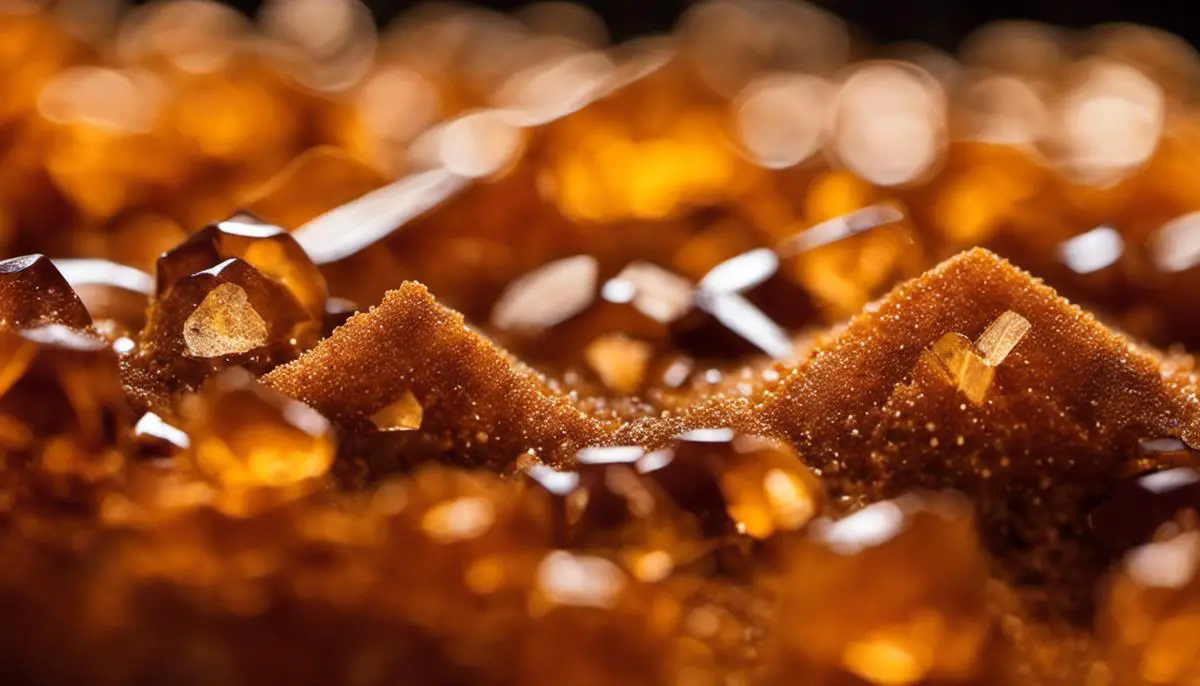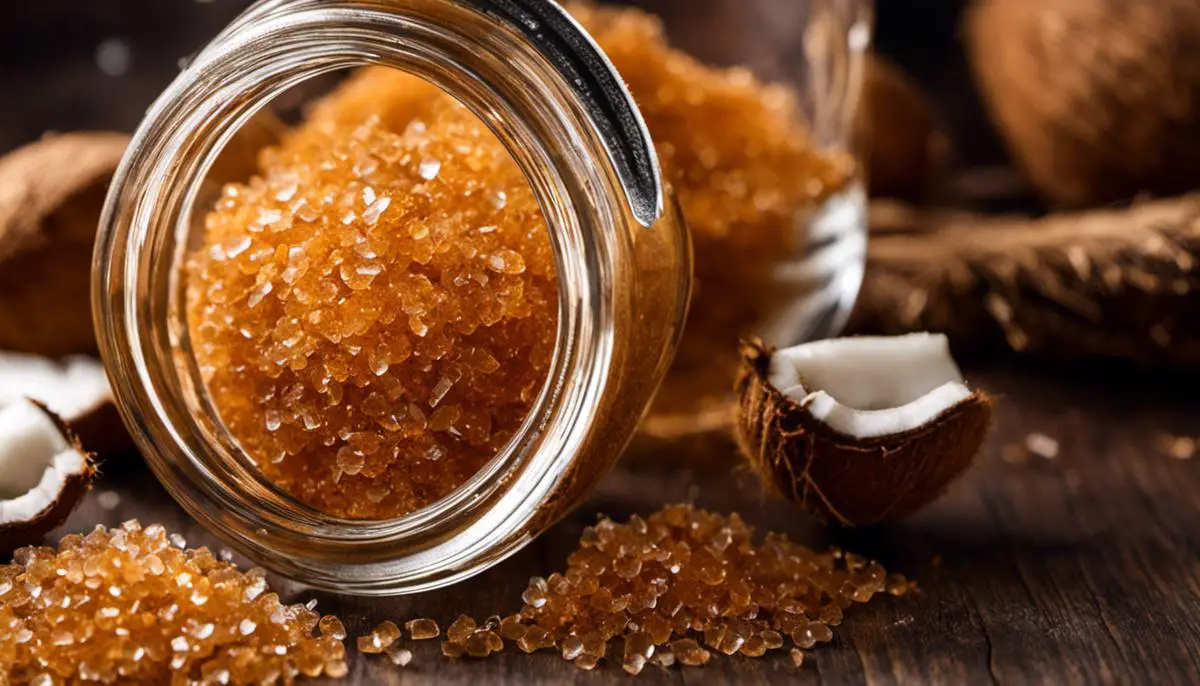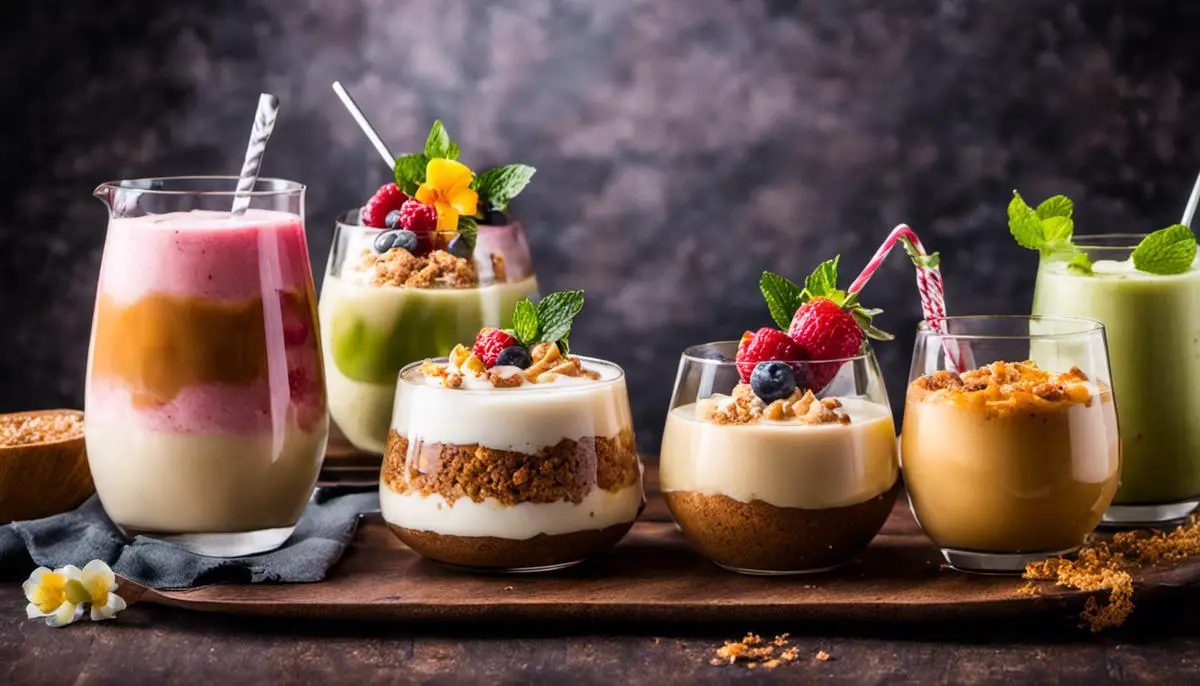Table of Contents
Demystifying the natural sweetener known as coconut sugar is an adventure in culinary exploration and a journey towards healthier eating habits. This sugar deriving from the coconut palm tree not only boasts a low glycemic index, but also carries a unique, caramel-like flavor that can immensely elevate the taste profile of common dishes, offering an exquisite alternative to refined sugars. In this insightful journey, we delve into the fascinating origin, remarkable health benefits, and various uses of coconut sugar. From baking staples like cakes and cookies to delightful desserts and beverages, embracing coconut sugar allows for a diverse breadth to your culinary repertoire, all while keeping the sweetness in check.
Understanding Coconut Sugar
Understanding Coconut Sugar: Origin
Coconut sugar, also known as coconut palm sugar, is a natural sweetener harvested from the sap of the coconut palm tree, primarily in Southeast Asia. Its presence is made prominent in the warm, tropical climates where these palm trees generously grow. Production of coconut sugar involves making small cuts on the flower buds of the palm and collecting the liquid sap that seeps out. This sap is then heated to evaporate its water content, leaving behind the raw coconut sugar, featuring a granular texture and a brown color reminiscent of raw cane sugar.
Health Benefits of Coconut Sugar
Coconut sugar is often hailed as a healthier alternative to refined sugars due to its lower glycemic index, which makes it a better choice for those monitoring their blood sugar levels. Moreover, it contains inulin, a type of dietary fiber known to slow glucose absorption. In addition to these beneficial qualities, coconut sugar also provides small amounts of minerals like iron, zinc, calcium, and potassium, as well as antioxidants. Though it may not be a superfood, it certainly has nutritional advantages over everyday white sugar.
Utilization of Coconut Sugar in Recipes
Coconut sugar can be a versatile ingredient in the kitchen. It can replace cane sugar in a 1:1 ratio in most recipes, making it an easy substitute without having to do precise conversions. Whether it’s baking cookies, muffins, or making sauces and salad dressings, coconut sugar seamlessly fits in, offering a delectable note of caramel-like sweetness. It can be used in coffee and teas as well, particularly those of the more robust, bitter varieties, as it contributes a soft, malty sweetness without overwhelming the drinks’ innate flavor profile.
Impact on Flavor and Texture in Dishes
The employment of coconut sugar in your recipes can transform the taste and texture of your dishes substantially. It has a deep, caramel-like flavor that adds a more complex note to baked goods and other sweet dishes compared to the one-dimensionality of regular sugar. When it comes to texture, it’s worth noting that coconut sugar is a little coarser than common sugar. Hence, it can make pastries and other recipes slightly denser, yet it contributes to a satisfying texture and enhances the overall eating experience. It can also foster a darker color in your finished product.
The Swap: Substituting Refined Sugar with Coconut Sugar
It’s clear that coconut sugar can make a valuable substitute for refined sugars in various culinary applications. While the sweetness level is roughly the same as regular sugar, it brings along its unique flavor notes that can elevate the taste of your dishes. A clearer understanding of its properties can aid you in deciding where and how to incorporate this natural sweetener effectively into your recipes. However, it’s important to remember to still use it in moderation as, despite its benefits, it is still high in calories and fructose.

Coconut Sugar Baking Recipes
Coconut Sugar in Baking
Incorporating coconut sugar into your baking is a beneficial and flavorful alternative to regular white sugar due to its low glycemic index and rich caramel properties. This natural sweetener easily blends into your cake, cookie, and pastry recipes.
Understanding Coconut Sugar to Other Sugar Ratios
Typically, you can substitute coconut sugar at a 1:1 ratio with regular white or brown sugar in your baking recipes. This means if a recipe calls for 1 cup of white sugar, you may use 1 cup of coconut sugar instead. Remember, the flavor profile of your sweet treats might slightly change due to coconut sugar’s distinctive flavor, but they will still turn out incredibly delicious.
Coconut Sugar Chocolate Chip Cookies
To make coconut sugar chocolate chip cookies, preheat your oven to 375 degrees Fahrenheit. In a mixing bowl, whisk together 2 and 1/4 cups of all-purpose flour, 1/2 teaspoon of baking soda, and a pinch of salt. In another bowl, beat 1 cup of unsalted, softened butter with 3/4 cup of coconut sugar until the mixture is creamy. Add 1 large egg and 2 teaspoons of vanilla extract, continuing to beat until everything is well combined. Gradually add your dry ingredients into your wet ones, mixing just until incorporated. Stir in 2 cups of chocolate chips. Drop tablespoons of dough onto a baking sheet and bake for 9-11 minutes, or until golden brown.
Coconut Sugar Vanilla Cake
One of the simplest coconut sugar recipes to try is a basic vanilla cake. Begin by preheating your oven to 350 degrees Fahrenheit and greasing your cake pan. In a large bowl, cream 1/2 cup of softened butter and 1 cup of coconut sugar until light and fluffy. Beat in 2 eggs, one at a time, followed by 2 teaspoons of vanilla extract. Combine 1 and 1/2 cups of all-purpose flour, 1 and 3/4 teaspoons of baking powder, and a pinch of salt in another bowl. Gradually mix this into the butter mixture. Pour the batter into the prepared cake pan and bake for 30 to 40 minutes until the cake tests done.
Experimenting with Coconut Sugar
Once you’ve got the basics down, don’t be afraid to experiment with coconut sugar in more complex pastry and baking recipes. Remember that coconut sugar has a lower melting point and slightly higher liquid content than white sugar, so it might slightly alter the texture of baked goods. However, its deep, caramel-like flavor can add a unique touch to your desserts. Whether you’re baking a pie, muffins, or a loaf of bread, substituting coconut sugar can bring out a unique flavor in your sweet treat.

Creating Coconut Sugar Desserts and Beverages
Coconut Sugar Desserts
Creating sweet and delectable desserts using coconut sugar is a great alternative to regular or brown sugar. Coconut sugar has a caramel-like flavor that adds dimension to bakes meant to satisfy your sweet tooth. One such dessert is Coconut Sugar Pudding, a simple and easy dessert to prepare.
To create this pudding, begin by gathering 2 cups of whole milk, 3 tablespoons of cornstarch, 1/2 cup of coconut sugar, a pinch of salt, and 1 teaspoon of pure vanilla extract. In a saucepan, mix the cornstarch, coconut sugar, and salt. Gradually whisk in the milk and cook over medium heat, stirring consistently until the mixture bubbles and thickens. Remove from heat and stir in the vanilla. Pour into individual serving dishes and refrigerate for 2-3 hours before serving.
Coconut Sugar Beverages
Coconut sugar isn’t just for desserts; it also shines in a variety of beverages, like smoothies and hot drinks. The Coconut Sugar Smoothie is a refreshing drink that takes advantage of the natural sweetness of coconut sugar.
To prepare this smoothie, combine 1 cup of almond milk, 1 banana, 1/2 cup of Greek yogurt, 2 tablespoons of coconut sugar, and a handful of ice in a blender. Blend until smooth and creamy, adjusting the sweetness to taste by adding more coconut sugar if desired.
For a warm and comforting beverage, try the Coconut Sugar Hot Chocolate. This recipe calls for 2 cups of almond milk, 2 tablespoons of unsweetened cocoa powder, 2 tablespoons of coconut sugar, and a dash of salt. Warm the almond milk in a saucepan over medium heat. Whisk in the cocoa powder, coconut sugar, and salt until smooth and hot, then remove from heat and serve immediately for best flavor.
Distinctive Taste of Coconut Sugar
The reason coconut sugar works so well in desserts and beverages is its distinctive taste. Unlike regular granulated sugar, coconut sugar has a deeper flavor profile with hints of caramel and brown sugar. This quality makes it a supremely versatile ingredient in the kitchen, complementing everything from fruity smoothies to rich puddings and cocoa-based drinks.
Remember, coconut sugar does have a stronger flavor compared to traditional sugars, so it’s best to add it gradually and taste along the way when you’re first starting to use it. This way, you will familiarize yourself with the ingredient and will be able to control the flavor profile of your beverages and desserts effectively.
As you make more coconut sugar-based dishes, you’ll come to appreciate the robust sweetness and depth it brings to your culinary creations. With practice, you’ll become adept at harnessing the taste of coconut sugar to elevate your desserts and drinks.

By replacing regular sugar with coconut sugar, your culinary creations can become a step towards a healthier lifestyle. The rich, caramel-like taste of this natural sweetener not only promises to enhance the flavor of any dish, but also contributes to your health. Baking, creating delicious desserts or whipping up tasty beverages, the use of coconut sugar opens up a world of possibilities. So go ahead and incorporate this versatile ingredient in your recipes, experience the burst of unique flavors and make your dishes stand out, while embracing a wholesome way of life.
